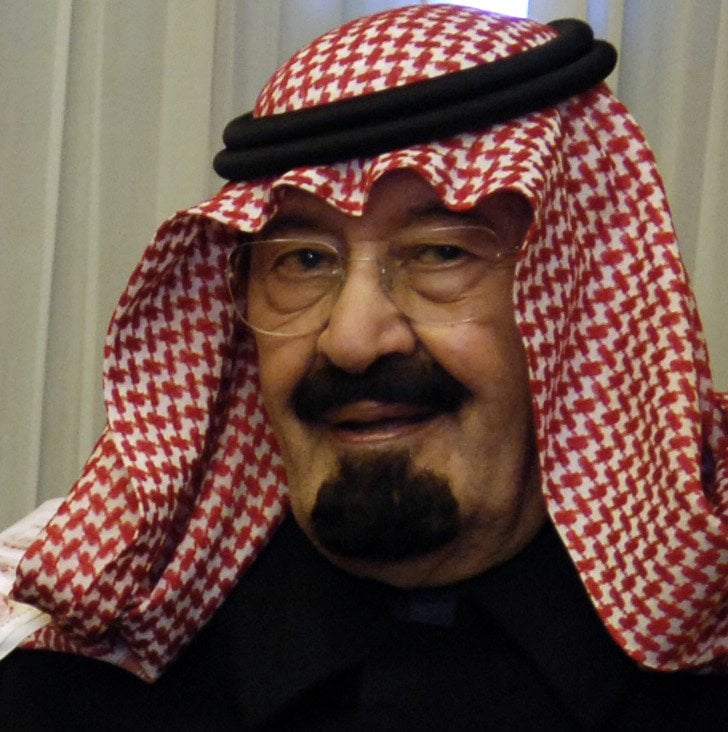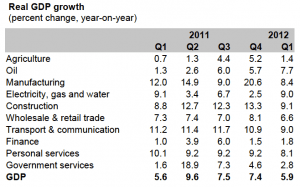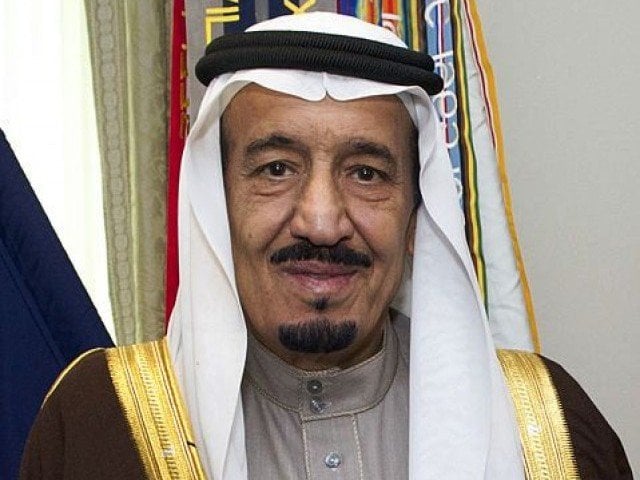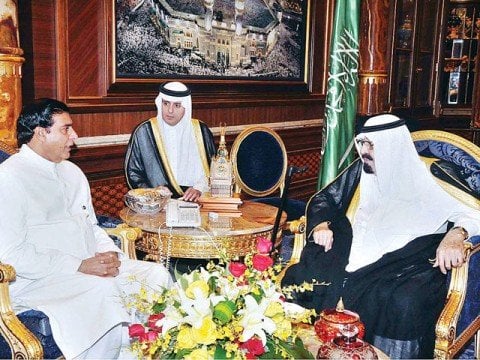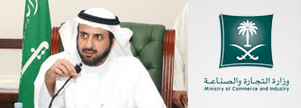Mehmood Ul Hassan Khan
Despite regional socio-economic depressing conditions and continued political unrest, the Kingdom of Saudi Arabia has emerged star performer. Its society is dynamic and its system is articulated. It is on the way of socio-economic prosperity. All the major indicators of its macro-economy are positive and all in all national economy is stable and sustainable.
Zero-Deficit & Surplus Budget
Saudi Arabian federal budget recorded a surplus of SR306 bn in 2011 and SR97bn in 2010 which was used on different mega projects of social development throughout the country. It was used for the overall wellbeing of its people by initiating different projects of education, health care, housing and infrastructure.
Socially Vibrant
Saudi Arabia has become more socially vibrant and now women are in government positions ranging from ministerial levels to the Shoura Council. Over 100,000 young Saudis are on scholarships overseas, and the media is now free to challenge government performance. It shows its immense social development achieved over the years. The World Economic Forum report titled “The Global Competitiveness Report 2011-2012”, Kingdom remains among top 20 most competitive countries and maintains its first position in the region. The latest Fitch Ratings (2012), shows the Kingdom’s political and financial stability. The Kingdom is determined to continue modernizing its infrastructure and accelerating economic activities in order to realize diversification of the sources of income.
Strength of Macro-Economy
The official figures published most recently says Saudi Arabia’s economy is projected to increase by around 3.8 per cent in current prices to hit an all-time high in 2012 because of strong economic diversification drive and good performance by the public and private sectors. It forecasted the country’s real GDP would grow by nearly 5.3 per cent in 2012, one of its highest rates. According to figures, the GDP was in SR2,136 billion (Dh2,115bn) in 2011, now projected to reach at SR2,245 billion (Dh2,225bn) in 2012 due to which Saudi Arabia would remain the largest economy in the region. Saudi Arabia’s net foreign assets by nearly $166 billion in 2012 and the funds are set to surpass $one trillion in 2015 for the first time in its history.
Healthy Contribution of Private Sector
According to the latest report of the central department of statistics and information of Saudi Arabia (2012), the private sector growth, at 9.9 percent, outpaced the state sector’s 3.6 percent expansion. Private sector GDP amounted to SR112.91 billion in the fourth quarter compared to SR102.75 billion in 2010. Moreover, the construction sector expanded 13.3 percent because of a real estate boom and heavy government spending on infrastructure. Saudi Arabia’s exports increased by 32 percent to reach SR38.61 billion compared to SR29.30 billion in the same period last year while the weight of the imports of Saudi Arabia amounted to 4507,000 tons against 3135,000 tons in the same period of last year, an increase of 44 percent.
Sky-high Foreign Assets
The Saudi Arabian Monetary Agency (SAMA) said Saudi net foreign assets, also increased by nearly $94 billion to its highest level of $560 billion at the end of 2011 $466 billion at the end of 2010. The report expected the foreign assets to reach $682 billion at the end of 2012 and nearly $779.9 billion at the end of 2013. It showed the surge in nominal GDP boosted its per capita income to around $20,244 in 2011 from $15,246 in 2010 and expected it to reach $19,449 in 2012. It expected the assets to further swell to $1,128 trillion at the end of 2016 and break another record of $1,213 trillion at the end of 2017. According to the official report (April, 2012), foreign investments in Saudi Arabia jumped to $34 billion in 6 years.
Resilient Banking & Finance Industry
Banking and financial industry is resilient and performing at its highest levels during 2011-2012. The statistical data (October, 2012) showed net profits of Saudi Arabia’s banks by nearly 12.4 per cent in the first nine months of 2012 and banking industry. The comparative study of different banks balance sheets showed from around SR24 billion (Dh23.7 billion) in the first nine months of 2011, the net income of its Kingdom’s 12 banks surged to nearly SR27 billion (Dh26.6 billion) in the first nine months of 2012.
Banks Details Financial Strength
Al Rajhi One of the largest financial units in the Middle East, emerged as the biggest earner, Earned nearly SR5.97 billion in the first nine months of 2012 compared with about SR5.47 billion in the first nine months of 2011.
National Commercial Bank The region’s largest bank by assets Net earnings increased to SR5.04 billion from SR4.47 billion.
SAMBA The third largest earner Profits grew to SR3.46 billion from SR3.36 billion.
Riyadh Bank Fourth in terms of net profitability Net income increased to SR2.65 billion from SR2.37 billion.
The above table shows that positive trends in macro-economy and healthy contribution of its public-private sectors played tremendous role in the booming profit ratios of its banking industry in recent times. Moreover, government’s initiating of different mega projects also played supportive role in the further strengthening of its banking industry.
Banks Profitability Ratios
Moreover, according to National Commercial Bank (NCB) report deposits of its 12 banks swelled by more than 10 per cent year-on-year in August 2012. It showed total claims of the country’s banking sector, excluding T-bills and government bonds, surged by around 15.6 per cent to SR960.9 billion at the end of August. Short term loaning has increased by an annual rate of 15.7 per cent while long term financing gained a relatively small 8.4 per cent Y/Y. Meanwhile, medium term credit added the highest percentage at 27.4 per cent to reach SR168.3 billion by the end of August 2012. It seems that the pickup in lending has outpaced the flow of deposits which led to the improvement in the loans-to-deposits ratio to reach 83.2 per cent, the highest since April 2009.
It has supported banks in growing their profit levels which have already made a strong recovery from the financial crisis. Credit to private sector increased by an annual 14.4 per cent during August 2012. Demand deposits have increased their share to 60.6 per cent by an annual gain of 15.3 per cent. Businesses and individuals have added 14.4 per cent Y/Y to their demand deposits while government entities amassed an annual 31.9 per cent. Foreign currency deposits have increased by 18.6 per cent during August.
It showed fresh lending to the private sector has reached SR93.1 billion for the first eight month of 2012 compared to SR81.7 billion for the whole 2011. On the contrary, credit to the public sector contracted by 12.4 per cent Y/Y as the level of treasury bills dropped drastically due to the elevated issuances last year.
Reduction of Public Debt
According to the Riyadh-based Jadwa Investments (September, 2012), strong economic indicators and highest levels of production, the public debt is expected to dip this year to its lowest level in more than two decades. The report said from SR167 billion at the end of 2010, Saudi Arabia’s public debt decreased to nearly SR136 billion at the end of 2011. It expected the debt to recede further to around SR115 billion at the end of 2012 and SR100 billion at the end of 2013, its lowest level since 1980s.
The report indicated the witnessing of on another fiscal surplus of SR91 billion in 2012 and nearly SR14 billion in 2013. The figures showed the decline in debt pushed down its ratio to GDP from around 9.9 per cent at the end of 2010 to 6.3 per cent at the end of 2011. It projected the ratio at nearly 5.6 per cent in 2-12 and 4.7 per cent in 2013. It has multiplier socio-economic effects.
The report showed the public debt increased to its highest ever level of SR689 billion at the end of 1999 before plunging to nearly SR660 billion at the end of 2002. It remained almost unchanged by the end of 2003 before it began its rapid slide in the following years to reach SR614 billion at the end of 2004. Furthermore, at the end of 2005, the debt plummeted to SR475 billion and continued its plunge to reach about SR267 billion at the end of 2007, nearly 18.7 per cent of Saudi Arabia’s nominal GDP of SR1.430 billion. The debt was sharply cut in 2008 after Saudi Arabia recorded its highest ever budget surplus.
The official figures showed the surge in Saudi Arabia’s income boosted its gross official reserves to a record high of $634 billion at the end of 2011 from nearly $520 billion at the end of 2010. The report projected the country’s actual revenue this year to soar to SR824 billion against a projected SR702 billion.
Robust Social Development
The recently published report of the CBRE (September, 2012), the country remains focused on social sector and started mega projects of infrastructure and social programs during 2012. Its budge 2012 allocated $45 billion for the education sector, $23 billion, healthcare and $9.4 billion for transport. It expected, government spending on nonoil infrastructure is likely to be around 7 percent higher than in 2011.
In public construction sector about $67 billion has been set aside for the construction of 500,000 housing units. These housing units, which are intended to meet the needs of the lower income sector, will be located around the Kingdom with the first of them currently being master planned on various sites totaling 32 square kilometers.
Development of Public-oriented Projects
The Council of Ministers agreed to initiate a trans-Saudi Arabian railway line along with a massive public transport system for all the major cities. The transport solutions will include both buses and trains and will be first implemented in Riyadh, where phase 1 completion is expected in 2017. Around 80 percent of the metro network will be underground and will be served by 34 stations.
Flourishing Service Sector
To successfully meet the increasing demands of the overseas passengers at different air ports in the country the capacity of Riyadh’s international airport is anticipated to triple to 25 million per annum by 2015 as part of the first phase of planned aviation sector expenditure totaling $53 billion.
According to STR Global (September, 2012) Saudi Arabia currently has around 53,000 branded hotel rooms although 32,000 of these are in Makkah and Madinah. In 2011, the Kingdom hosted 15.4 million foreign visitors, of which 10.6 million were traveling as pilgrims. The number of new branded beds planned to enter the market is however significant, amounting to an increase of around 60 percent over the next few years.
Under the Ninth Development Plan, the government has allocated up to SR250 billion ($66 billion) for social housing projects alone. The government is widely reported to be planning the construction of approximately 500,000 housing units across the Kingdom, but has not published a national housing strategy through which such policy can be implemented.
Regional Financial Aid New Commitments (Januay 1, 2011 to June 1, 2012)
(US$ billions)
Country Pledged Details
Bahrain and Oman GCC package of $20 billion split the GCC States
Egypt 3.99 A combination of budget support, central bank deposits, project financing, and trade credit.
Yemen 3.60 Total pledge including diesel and crude oil grants
Jordan 2.65 $1.4 billion in budgetary support and a GCC package of $5 billion split equally GCC States.
Morocco 1.25 GCC package of $5 billion split equally among GCC States
Tunisia 0.75 $0.5 billion for project financing and $0.25 billion for export financing
West Bank and Gaza 0.34 Budgetary support
Sudan 0.24 Infrastructure loan
Djibouti 0.04 Budget support and project loans
Source: Ministry of Finance
The above table clearly shows Kingdom of Saudi Arabia paramount role in the development of regional countries. It has been helping the GCC states and MENA region in their national crises since its inception.
Momentous Pak-Saudi Arabia Bilateral Relations 2011-2012
Saudi Arabia is among the top 15 export partners of Pakistan and bilateral trade volume has gone above US$ 4 billion per annum and which would be further increased in the days to come. Pak-Saudi Arabia also geared-up during 2011-2012. High official meetings at different levels were held in Islamabad and Riyadh during which both the countries agreed to cooperate in the fields of trade‚ textile‚ pharmaceutical‚ banking and other fields. Tawfig Fauzan Al-Rabiah Saudi Arabia’s Trade Minister assured the inflows of FDIs in the country especially in energy sector in order to get rid of looming energy deficit. The Joint Ministerial Commission’s (JMC) meeting was also taken place after the gap of five years.
Pakistan’s offer for Saudi Investments
Country Preferred Sectors/Areas
Pakistan Hydropower projects. Exploration of the possibility of entering into industrial co-operation including joint ventures in agriculture, light & heavy industry and petroleum sector along with SMEs. Insurance and financial sectors.
Agreements on security cooperation and MoU on drug smuggling were also inked during the joint ministerial meeting held in Islamabad.
Concluding Remarks
It is hoped Kingdom of Saudi Arabia being the largest economy of the GCC and MENA would maintain its status in the years to come. It has surplus budget which is being used on the social development. Its political wisdom and rigorous diplomacy and conflict resolution policy has made it hub of all kinds of activities in the region. Its robust socio-economic development guarantees its onward march towards prosperity, dignity and strength. Pak-Saudi Arabia has the ability and capacity to lead Muslim World which is right now confronting with diversified challenges.
